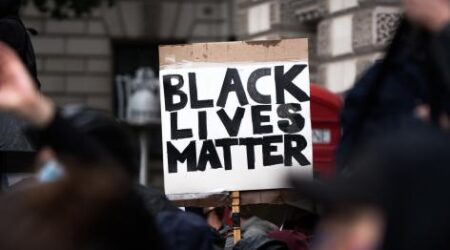Jack Glaser, Professor in the Goldman School of Public Policy, is a social psychologist whose primary research interest is in stereotyping, prejudice, and discrimination. He studies these intergroup biases at multiple levels of analysis. For example, he investigates the unconscious operation of stereotypes and prejudice using computerized reaction time methods, and he is investigating the implications of such subtle forms of bias in law enforcement. In particular, he is interested in racial profiling, especially as it relates to the psychology of stereotyping, and the self-fulfilling effects of stereotype-based discrimination.
Additionally, Professor Glaser has conducted research on a very extreme manifestation of intergroup bias — hate crime — and he has carried out analyses of historical data as well as racist rhetoric on the internet to challenge assumptions about economic predictors of intergroup violence. Professor Glaser is working with the Center for Policing Equity as one of the principal investigators on a National Science Foundation- and Google-funded project to build a National Justice Database of police stops and use of force incidents. He is the author of Suspect Race: Causes & Consequences of Racial Profiling.
Professor Glaser has been involved with past Matrix Research Teams on community trust and policing. We reached out to Professor Glaser in July 2020 for his insights on bias in policing in the wake of the protests for racial justice and police reform.
How do you describe your research, particularly as it relates to policing?
My research is centered on applying the psychological science around stereotyping and prejudice to understand racial disparities in policing, in stops and searches, and also in use of force.
I do that a number of different ways. The work I’m most associated with is research on how implicit bias gives rise to discriminatory judgments and behaviors. Some of the work I’ve done there is to measure, for example, the extent to which people hold an association between Blacks and weapons, and the extent to which that causes them to make a shooting response to an armed Black man faster than unarmed White man, or to make a no-shoot response to an unarmed White man relative to an unarmed Black man. What I’ve been doing more recently, though, is working with police departments and with various government agencies to try to figure out what’s going on in the field, and how to reduce the racial disparities that we see time and again, across many different datasets.
Where does racial bias come from?
There’s a century’s worth of psychological science on prejudice and discrimination and stereotyping. But some of the fundamental understandings we have from careful experimental research include the fact that people are hard-wired to categorize others and themselves into racial and ethnic and other kinds of groups. We just do that very spontaneously, we start doing it at a very young age, and it’s not something we can really turn off.
We make those categorizations, and then we have a tendency to prefer the groups we belong to. It’s natural in-group favoritism that people tend to have. On top of that, people who belong to negatively stigmatized groups are less likely to like the group they belong to than the ones who are from the superordinate, high-status, high-power groups. And we also have the specific content of the stereotypes that we have about members of various groups. So we very quickly start to formulate hypotheses about how people from one group or another are going to behave. That might be along gender lines, or racial or ethnic lines, or age lines, or political affiliation lines. We make sense of our complex world by putting people into these categories, and then having predictable traits about those categories.
One of the very prominent stereotypes that’s highly pervasive in American culture is that Black people are associated with crime and weapons and violence. Police officers are not immune to that, so as a consequence, they tend to regard people of color with greater suspicion, because the stereotypes cause them to interpret ambiguous behaviors in a manner that’s consistent with their prior conceptions. In the last 30 or so years, there’s been an avalanche of research on implicit bias and how these biases operate outside of our conscious awareness, and then can be activated automatically, and influence our perceptions and our judgments and behaviors, in spite of our best intentions to behave in a fair and unbiased manner.
How is it possible to bypass or manage this kind of bias?
Training is the usual response. Unfortunately, we don’t know of any training that reduces these biases or consistently reduces the impact that they have on behavior. There is a whole cottage industry of implicit bias trainers across many industries, but especially in policing, and they’re private companies that offer training for a fee. To the extent that they’ve been studied at all, there’s no indication that they actually change performance in the field.
There is a non-trivial number of officers who are explicitly biased and deliberately and overtly engaging in racial profiling or racial oppression, but for the vast majority of officers who are at least trying to operate in an unbiased manner, they are unable to suppress and control the influence of these implicit biases. And so it’s not really realistic to expect that a day’s worth of training, or even multiple days of training, is going to change their biases, or give them the skills that enable them to short-circuit the influence of those biases. You really need chronic motivation, a specific strategy, and then the cognitive resources or the opportunity to impose that strategy to prevent those biases from influencing your judgments. The likelihood that police officers on a day-to-day basis are going to be able to mobilize all three of those dimensions to override their biases is very low.
My view is that the effort should be focused on supervisory staff — sergeants and above — who are determining the decision-making environment the officers are stepping into. They’re the ones who are setting the incentives. If they’re trying to get officers to make a lot of arrests, or find a lot of drugs or weapons, then those officers are going to go out and make a lot of indiscriminate stops and searches of people, most of which (the data show us) are going to be unfruitful.
One of the things we find in the data across many different jurisdictions is that, among the people that officers stopped and searched when looking for guns and drugs, the Whites that they search are more likely to actually be in possession of illegal contraband than the Blacks and Latinos that they search. That’s probably because they are imposing a higher threshold of suspiciousness in order to decide to search a White person in the first place. To the extent that those kinds of discretionary stops are occurring and are being imposed disproportionately on people of color, that is going to be a catalyst for the influence of the implicit or explicit biases on the treatment of minority community members. The best way to have a significant effect on reducing that disparate impact is to reduce those kinds of behaviors that give rise to discriminatory effects.
What kinds of structures can be put into place to help reduce racial bias in policing?
The psychological research on controlling the influence of bias is pretty clear. The first element you need to have in place to be able to make an unbiased judgment is having the cognitive resources, which means not being rushed or stressed or drunk or tired. Then you can make a deliberative judgment and focus on specific indicators of, in this case, suspicion or whatever it is that you’re looking for. And so that needs to be in place in the first place for the implicit bias not to influence you.
But even if you have that, it’s difficult for a normal person to look at another person, take the information that is available to them — which is never going to be complete, and will always have some ambiguity — and differentiate between the subtle, implicit things that are causing them to regard that person in a certain way with the actual objective indicators of that. We can’t subjectively separate those things out very well. You need a specific strategy to help you try to separate those things out. That involves approaches like trying to think of that individual as another person, or relating to them by taking their perspective. Lots of different strategies have been tried, and some of them work. But none of them works for very long.
One approach would be to use some kind of checklist to say, does this person have these three characteristics that have been empirically demonstrated to be related to this sort of suspicious behavior? In the absence of that, they don’t meet the criteria for being searched. The strategic approach would be to formalize the process. But that’s very difficult to do in the real world when you’re encountering things in a fluid situation. So my view is that the incentives matter more. And generally, what you’re asking people to do is going to determine the extent to which what what they’re doing is discriminatory.
Have you seen any departments implement these shifts in incentives?
I can’t say that I’ve seen it done that rewards are changed to promote accuracy, per se. But what we have seen across multiple jurisdictions is that some police departments are backing away from the incentive to make a lot of drug arrests. In New York City, the city lost a major class action lawsuit over “stop and frisk,” so there’s been a radical reduction in the number of pedestrian stops they are doing in New York. There was also a shift in political winds at the same time, but they’ve gone from almost 700,000 stops a year to under 20,000 stops a year. It’s almost unrecognizable. What we see there is that those racial disparities in the outcomes of the searches have become almost equalized in New York, while the crime rate was flat or declining. Oakland, California also reduced the number of discretionary stops (mostly vehicle stops) that their officers were making. They also saw a reduction in racial disparities for those stops, and there was no impact on crime.
It’s not entirely clear to me as an outsider how those incentives changed, but I have an opaque sense that it was the removal of an encouragement to make a lot of stops in New York, and even a prohibition, like, we’re not doing those stops anymore unless you have a high degree of suspicion. In instances where we have seen that, you see not only overall reduction in stops, but also reduction in the disparities. And one thing that’s important to bear in mind is that, even if you didn’t see a reduction in the disparities, because the harm of being stopped without good purpose is overwhelmingly borne by communities of color, reducing that activity overall is going to differentially benefit those communities. It’s not going to equalize things, but it is going to have a benefit for those groups.
What are the research questions you’re asking now?
I have a couple of research projects currently in progress with my very impressive colleagues, one of which is with Perfecta Oxholm, a doctoral student at the Goldman School, who is doing her dissertation work with the Oakland Police Department. She’s going to be doing a multi-methodological study where she is interviewing police officers and community members to get a sense in a qualitative way of their perceptions of each other — and their perceptions of their perceptions of each other. And then we’ll be doing survey-based research that’s more structured based on those interviews, and ultimately doing an intervention, a randomized, controlled trial where some police officers engage in particular community contact activities to see how that affects attitudes on both sides.
Communities have a right to have good relations with other people, including agents of government, and to feel enfranchised and to not feel threatened by agents of government. But it’s also in the interest of the state for communities to trust law enforcement, because they’re going to be more likely to report crimes and to cooperate with investigations. It’s generally a win-win all around. Historically, it’s been clear that having an oppressive relationship between law enforcement and minority communities is not helpful.
I’m also conducting research with colleagues at UC Davis and RAND where we have developed a computerized simulation that we’re going to be rolling out with police officers, in which we have experimentally manipulated the race of the person they view on the computer monitor, and they evaluate the suspiciousness of the behaviors he’s engaged in. We have 72 different scenarios, where individuals are doing things ranging from not at all suspicious, like just sitting on a stoop, to highly suspicious behaviors, like dropping a gun behind a bush. In between are the really interesting ones, where they’re dropping some ambiguous object, or they’re picking something up from under a suspicious place. The idea is that we want to see the extent to which there are racial differences in who they regard as suspicious. The question is, would you stop and search this person? The main purpose is to establish a standardized metric for the variation in racial sensitivity that officers have to the race of the suspect, and to look at how that relates to their actual field performance, and the racial distribution of the people that they’re actually stopping in the field. We’ll be measuring lots of other things as well.
We created little animations of three still photographs that depict a process where somebody is moving through space and doing something, but it’s highly standardized. We have Black and White actors playing these parts doing exactly the same thing. We will of course mix up the order in which people see them. So it won’t be like, here’s the Black guy doing it, here’s the White guy doing it. But you know, just be respond to this individual. We may give some of our research participants only the Black actors and or only the White actors to do what we would call a between-subjects comparison. We’re going to do it a lot of different ways to see what we can pick up.
How might police departments be able to use that kind of standard metric?
If we find a correlation between racial bias in that measure, and the racial distribution of who they’re stopping and searching — or the outcomes of the searches they’re doing — that would give the department quite a bit of insight. Without the metric we’re developing, they could look at those racial disparities in who has been stopped and searched and throw their hands up and say, well, that might just be them responding to what’s happening on the street. But if we can show that there’s a relationship between the sort of preconceptions and the actual performance, that would be enlightening. It could also lead to training opportunities, where they use that information to say, you should be looking at the object, but the officers who do this tend to be influenced by the race of the person dropping the object or picking it up.
What are common misconceptions that people have about policing and racial bias?
One thing people don’t realize is that the overwhelming majority of police civilian encounters do not have any public safety-enhancing effect, especially the discretionary encounter. Obviously, calls for service when officers are responding to a call — whether there’s been a witnessed crime, or there is some kind of crisis — those have great public safety-enhancing value. But these discretionary stops, or low-level equipment failure vehicle stops, do not promote public safety. And only a very small minority of them result in any kind of recovery of weapons, and a slightly larger but still small fraction result in recovery of illegal contraband like drugs.
A lot of these discretionary activities that police are engaged in are not only not promoting public safety, but they are disproportionately borne by communities of color. And that has the effect of violating the Constitution — violating those people’s right to equal protection and due process — but it also destabilizes the communities and causes a lack of trust and a lack of cooperation.
In the case of something like the murder of George Floyd, it’s hard to use the usual explanations of automatic bias and the like to explain a nine-minute strangulation. But the more typical cases, where there’s a shooting and maybe even a foot pursuit, those are disproportionately Black victims when they’re unarmed. That’s quite clear in the research, although there’s another body of research that shows that if you look at all of the cases of fatal officer-involved shootings, there doesn’t appear to be a racial disparity. The problem with that analysis is that it’s really the unarmed victims that are the ones who shouldn’t be getting killed by the police, and that’s where the disparities reside. The much larger number of cases are armed victims, and they tend to be White men.
The fact that it took the George Floyd killing to bring this to the public consciousness, to the boiling point where change can actually happen, something about the way our society is structured in the way people from a hegemonic group are unlikely to relate to the challenges of minority groups. What we don’t want to lose sight of is that the fatal killings and use of force on unarmed Black men is just the tip of the iceberg of the daily indignities that Black people suffer at the hands of police when they’re being overzealous. That’s the big mass of the iceberg under the water that most of us don’t see, but that minority communities feel the weight of very, very heavily.



